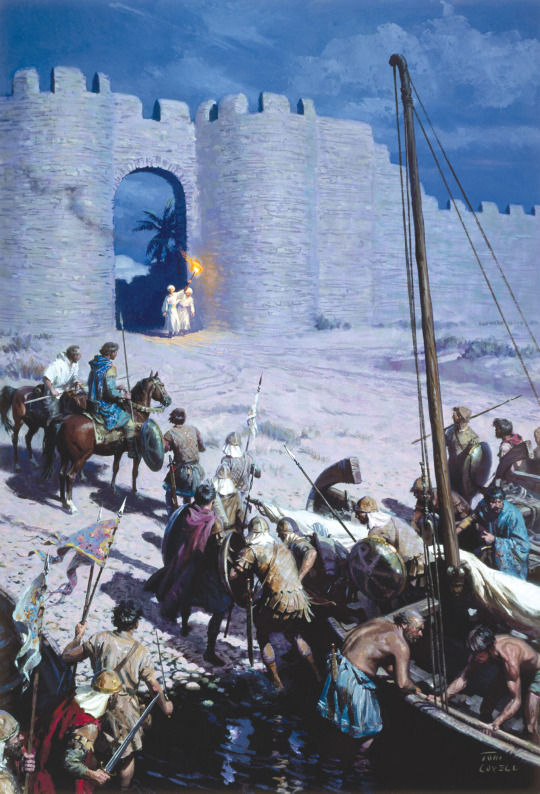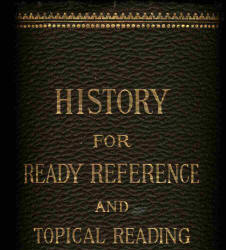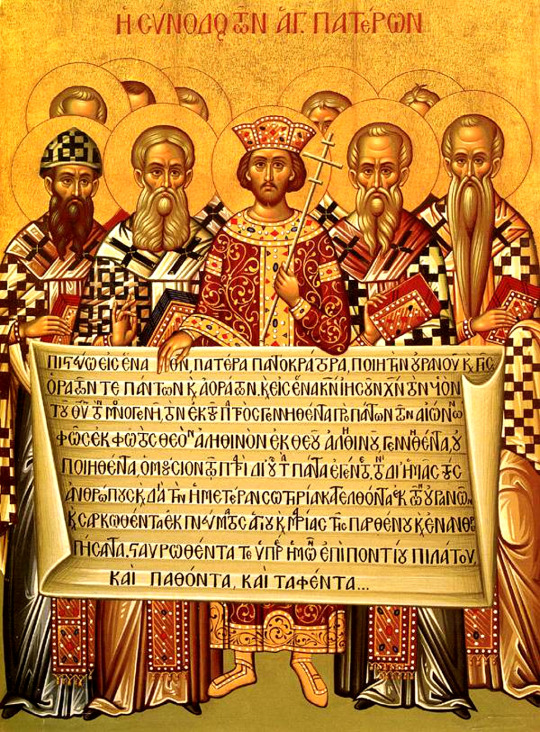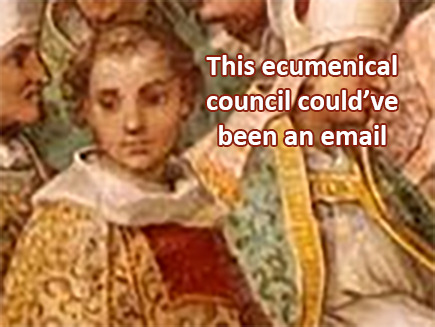#nicaea
Text

Byzantine Soldiers Sneaking Into Walled City Of Nicaea
by Tom Lovell
#siege of nicaea#art#tom lovell#byzantine#soldiers#byzantium#first crusade#crusades#crusade#medieval#middle ages#history#christianity#christian#nicaea#siege#fortress#castle#byzantine empire#constantinople#seljuk#turks#manuel boutoumites#walls
100 notes
·
View notes
Text
Coin of the Day #74 (7/17/2024)
A nice looking provincial…


Roman Province - Bithynia
AE18 - 3.00g
Gordian III 238-244 AD
Nicaea Mint
Obverse M ANT ΓOPΔIANOC AVΓ
Bust of Gordian III right, radiate, draped, cuirassed, from behind
Reverse NIKAIEΩN
Between and below three standards topped by wreaths
RPC VII 1979
#coin of the day#roman empire#roman province#gordian iii#Nicaea#Bithynia#roman coins#ancient rome#coin#coins#numismatics#ancient coins
4 notes
·
View notes
Text
Claim: The New Testament canon as it currently exists is in a substantially reduced form from widely-accepted Christians writings from the first generation of the church, in particular neglecting gnostic writings. The Council of Nicaea established the canon because either the bishops whose views won out therein or Constantine did not prefer gnostic works.
Reality: The Council of Nicaea did not discuss the canon of the New Testament. The Athanasian and Arian sides were seemingly in agreement over the canon. Nicaea was convened principally to discuss matters of Christology, with the dating of Easter as a secondary issue.
The New Testament canon as it currently exists is largely in agreement with the set of works quoted by Ignatius of Antioch, Polycarp, and Irenaeus (all of whom died decades if not over full century before Constantine was born), along with the Muratorian fragment, written perhaps a full century before Constantine was born.
Ignatius quoted or alluded to most of the current New Testament canon (including many of Paul’s letters and perhaps all four canonical gospels), and, except Revelation, those books he did not were very short. He was martyred at the latest in the 140s, about 130 years before the birth of Constantine.
Polycarp quoted or alluded to most of the current New Testament canon as well, only neglecting John among the gospels. For what it is worth, he quotes two of John’s epistles. Again, most of the books he did not cite were very short in length, and there is only one known surviving work of his, an epistle to the Philippians. He was martyred in the middle of the second century, about 120 years before the birth of Constantine.
Unlike Ignatius and Polycarp, who contended with the proto-gnostics, Iraeneus had to contend with a more developed expression of gnosticism, along with Marcion and his followers, who promoted a very reduced form of the New Testament. Iraeneus wrote an idiosyncratic reasoning for why no fewer and no more gospels were to be considered canon than the now-accepted set of four, but given the quotations from earlier church fathers, it seems he was rationalizing a set of gospels that was already in wide use. He quoted or alluded to every book presently in the New Testament, with the exception of a few short, non-Pauline epistles. Note that he also considered 1 Clement and the Shepherd of Hermas to be Scripture. He died at an unknown date, under unknown circumstances, but likely sometime in the early third century, well before the birth of Constantine.
The Muratorian fragment is a name used to refer to the collation of two obscure manuscripts found in Italy containing a list of the books accepted at the time its original text was written as being in the New Testament. The manuscripts themselves are of medieval origin, but were copied from a text that refered to the Shepherd of Hermas as being a recent work, and attributing it to the brother of Pius, bishop of Rome AD 140-154. This suggests the work was originally written around AD 170, a century before the birth of Constantine. As the name suggests, the whole of the text which has survived to our day is in a fragmentary condition, but it mentions Luke and John being a third and fourth gospel, in addition to recognizing thirteen of Paul’s epistles, two epistles of John (which of them was included is unknown, but the Muratorian fragment quotes 1 John, suggesting either 2 or 3 John was excluded), the epistle of Jude, and Revelation. The only two books considered in the fragment not included in the canon are the Apocalypse of Peter and the Wisdom of Solomon. The former was described by the author as being rejected by some churches. The latter is included in the Old Testament by some groups. Hebrews, James, and the epistles of Peter were not discussed in the fragment. While the inclusion of Matthew and Mark as the first and second gospels is speculative, it is ludicrous to suggest the Gospel of John, which begins with describing Jesus as a fleshly being, Colossians, which describes the fullness of God dwelling in Jesus bodily, or the epistles of John, any two of which would have collectively described the protognostics as antichrist at least once, would coexist in the same canon as any gnostic gospel.
The only writings for which there seems to be some continuing disputes into the late second century were Philemon, Hebrews, some of the general epistles, and Revelation. However, besides these and the rest of the accepted New Testament, the closest to a somewhat accepted book in the New Testament canon was the Shepherd of Hermas, a decidedly non-gnostic work that was rejected due to its obvious post-apostolic origin and disconnection in concepts from the rest of Scripture. The overall trend, then, was for the canon of the New Testament to expand to its current form.
#Canon of Scripture#Council of Nicaea#Constantine#Nicaea#New Testament#Ignatius of Antioch#Irenaeus#Polycarp#Muratorian Fragment#Muratorian canon#gnostic gospels#Shepherd of Hermas#Apocalypse of Peter#gnosticism#protognosticism#protognostics
1 note
·
View note
Text
“St. Nicholas is here to give presents and punch heretics and he’s all out of presents”
-my mother
#insanityshush#quote from my mother#like#mom what#she had to explain to me#that#st. nicholas#at the council of#Nicaea#a bishop suggested#that they remove the trinity#which is pretty much the foundation of the church#and St Nicholas punched him#and it’s just like#bruh#im Roman Catholic btw#so im going off that faith#but like#how tf do you remove the trinity#that’s like removing the animatronics from fnaf
4 notes
·
View notes
Text
Islam as Progressive, Reformed Christianity: 10 Reasons We Don’t See That
Islam as Progressive, Reformed Christianity: 10 Reasons We Don’t See That
Living here in Spain, for the last few months has given me a new appreciation of Islam. As some might remember, my wife, Peggy, and I are here with our daughter, son-in-law, and their five children (ages 3-14). We plan to stay till the end of June.
Our rented apartment stands in Granada’s historic Albaicin district overlooking the 10th century Islamic walled city, the Alhambra. Right next to…

View On WordPress
#Albaicin#Alhambra#Christianity#Crusades#Ecumenism#Eurocentrism#Holy Quran#House of Wisdom#Islam#Islamophobia#Mithra#muezzin#Muhammad#Mystery Cults#Nicaea#Reformation#Reza Aslan#Spanish Inquisition
2 notes
·
View notes
Text

Vasily Surikov: First Ecumenical Council of Nicaea (1876)
1 note
·
View note
Video
youtube
What REALLY Happened at Nicaea?
Books of the Bible Chosen at the Council of Nicaea, 325 A.D? This is a common, but complete fabrication of history.
1 note
·
View note
Photo


https://www.gutenberg.org/ebooks/69262
Author
Larned, J. N. (Josephus Nelson), 1836-1913
Title History for ready reference, Volume 4 (of 6): Nicæa to Tunis
Original Publication United States: C. A. Nichols Co.,1895.
Credits Don Kostuch
Language English
Category Text
EBook-No.69262
Release Date Oct 30, 2022
Copyright Status Public domain in the USA.
1 note
·
View note
Text
(guy who only knows homestuck, learning about how christianity works) so god has splinters. like dirk
891 notes
·
View notes
Text

Byzantine soldiers sneaking into the walled city of Nicaea
by Tom Lovell
#byzantines#byzantine#byzantium#byzantine army#nicaea#art#siege#tom lovell#history#christianity#christian#constantinople#medieval#middle ages
53 notes
·
View notes
Text
@maaruin
Hinduism is probably a good example for how Roman-Platonist Monotheism would look like without the Jewish origin of Christianity: the theology is monotheist but to an outside observer the rituals look like they are honoring various gods, because polytheist practices have been re-interpreted in a monotheist way. Christianity is unusual not in its monotheist beliefs, but in that it required its followers to stop performing the traditional (polytheist) rituals.
I want to expand on this bc it touches something else McClellan mentions--how being the organized faith of the Empire really changed Christianity, or at least Nicene Christianity. Before it became institutionalized, there was a lot of room in early Christianity for different, contradictory Christologies (like Arianism, which was basically mainstream at one point); it's only with the Council of Nicaea that a compromise form of all these Christologies has to be hammered out (because the institutional church needs dogmatic harmony), and the boundaries of orthodox theology have to be policed--and can be, eventually with the full backing of state power. Before the most you could do was expel members of your church who disagreed with you, maybe refuse association with other churches whose theology differed too much. Once you have state backing you can use that authority to exclude heretics; and, later, once you are the official religion of the Empire, you can have heretics punished by the state.
I think this harsh ideological boundary maintenance really becomes a part of every state-backed church, but of course it's the Roman one that is by far the most powerful and most widespread; and even post-Great Schism and the fall of the western empire, the need for Catholic rulers to be in good with the Pope, and thus to enforce Christian orthodoxy within their territory, has the same boundary-maintenance effect.
McClellan contends that without this forced institutional compromise--which is what the Trinity is; "three persons with one substance" and stuff like "100% divine and 100% human" is not just "a mystery," it's functionally a nonsensical contradiction, and the reason why so many attempts to explain the Trinity fall into heresies like modalism or partialism is because the Trinity is wording-by-committee aimed at producing phraseology that most people at this one ecumenical council could tolerate, even if they didn't like it.
And by "most people" here we mean a very particular kind of educated Greco-Roman elite; a lot of early theology is shaped by what is conceptually acceptable to these guys, steeped in stuff like Neo-Platonism, and maybe doesn't have all that much to do with the peasant religion version of Christianity elsewhere (indeed, get your average theologically-untrained Christian of any era to try to explain something like the Trinity and I guarantee ninety-nine times out of ten they will produce an explanation that is technically a heresy).
All of which is to say I agree; a counterfactual "monotheistic" late-antiquity religion in a world without Christianity, but with the same Greco-Roman influences, would look very much like Hinduism; it would have a big split between, like, the everyday version of the religion and the theologically elucidated elite version of the religion; and I think it's the latter that would resemble Nicene Christianity on a lot of points. But then, folk Christianity often is very different from "orthodox" Nicene Christianity in the world we do inhabit, also.
68 notes
·
View notes
Text
“If you don’t teach your children to believe in themselves, what will you teach them to believe?”
Me:

#Nicene Creed#Council of Nicaea#Nicaea#I believe in one God the Father Almighty#Maker of Heaven and Earth#And of all things visible and invisible#I believe in one Lord Jesus Christ#The only-begotten Son of God#Begotten of his Father before all worlds#Begotten of the Father before all ages#God of God#Light of light#Very God of very God#Begotten not made#Being of one substance with the Father#homoousios#ομοουσιος#From Whom all things were made#Who for us men and for our salvation#Came down from heaven#And was incarnate by the Holy Spirit of the Virgin Mary#And was made man#Who was cruc ! f ! ed for us also under Pontius Pilate#And suffered and was buried#And the third day He rose again from the dead according to the Scriptures#And ascended into heaven#And sitteth at the right hand of the Father#From whence He shall come again in Glory#To judge the quick and the dead#Whose kingdom shall have no end
3 notes
·
View notes
Text

comparative religious studies
#the book of bill was banned by the council of nicaea waaaaaay back in the day but i found it#(yes that is a special edition journal….. yes it’s signed uwu)#gravity falls
20 notes
·
View notes
Text
Idk I guess My pastor saw the Christian girlies on tumblr going over the basic doctrines of the Trinity and wanted to get in on it today. 🗣🔥
"You can say you're a Christian, but if you deny the basic, foundational teachings of our Lord and Savior, you're Christian in name only."
The first undeniable core tenant of Christianity he names: "Firstly, Jesus is God incarnate."
"You can not deny the Deity of Christ and be a true, genuine believer in Jesus."
"...But if you say Jesus isn't God, don't say that's what Christianity teaches. If you say that, that's a misrepresentation of what biblical Christianity teaches"
"There are not many ways to heaven. That's not me saying that. That's what God's Word says."

#Sunday#Christianity#churchposting#see you at church#church#the trinity#Jesus is God#christblr#the council of nicaea
8 notes
·
View notes
Text

Et voila! I know you’ve all been waiting for it 🤭🤭
#byzantium#byzantine empire#byzantine empress#theodora palaiologina#anna of savoy#maria of trebizond#nicaean empire#empire of nicaea#13th century#14th century#15th century#history art#digital art#pride#lesbian#trans pride#pride art#greek tag#roman tag#italian tag#german tag#rus tag#bulgar tag#outremer#hungary tag#armenia tag#france tag
15 notes
·
View notes

